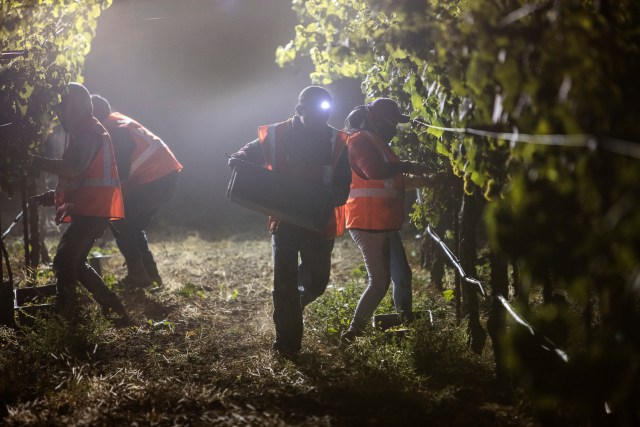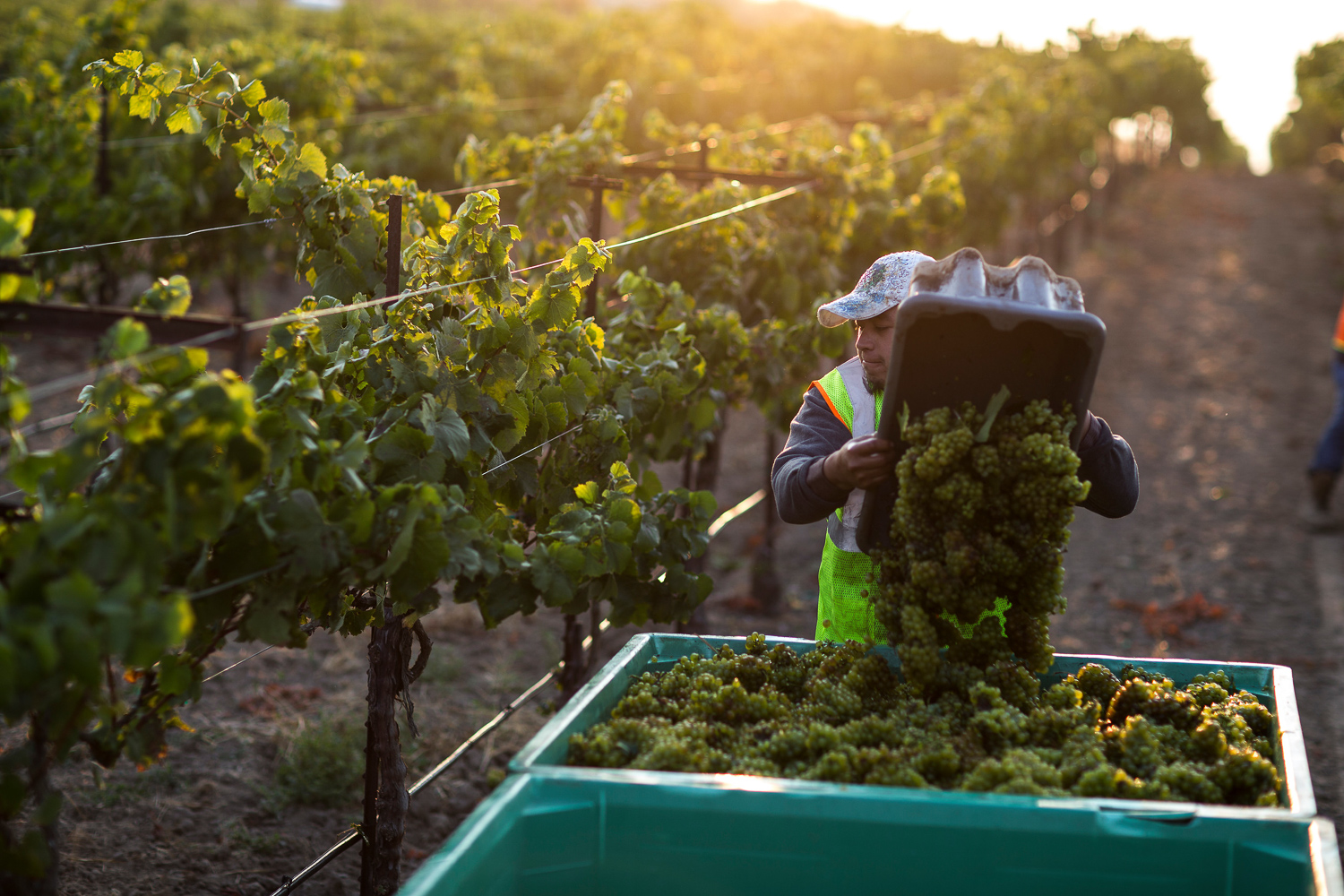The moment the entire year’s efforts have led up to is finally here again – it’s harvest season. The season starts when the grapes start to change color in late summer and culminates when our grapes arrive to the crush pad between August and November. Discover what happens at each stage of harvest and see why this is our favorite, yet most demanding, time of year at the winery.
Reaching Ripeness – Veraison

Typically, in July and August, our grapes begin to undergo ripening, a process known as Veraison. During this stage, the fruit transforms from small, green, hard berries into what we recognize as grapes. They begin to lose their bright green color and transform into more mature hues of translucent gold for white varieties and purple-ruby tones for red varieties. In addition to changing colors, the grapes also become softer and increase in size as the vine starts focusing on energy consumption, resulting in grapes with higher sugar levels and less acidity.
On Mother Nature’s Schedule – Determining When to Pick

As harvest draws near, winemaker Todd Graff closely monitors the development of the grapes from our four vineyard properties. In the weeks leading up to harvest, Todd will make daily vineyard visits to sample the grapes, check Brix (a measurement of sugar), and gauge overall grape balance between the sugars, acidity, and tannins. At this time, weather also plays a critical role in determining when to pick. Heat waves or potential rain showers can cause the vineyard crew to move up or postpone picking.
“Mother Nature always keeps us on our toes and that’s especially the case during the harvest season. As winemakers we have just one shot a year to get it right. We’re on Mother Nature’s schedule and need to be prepared for anything that might come our way.” – Todd Graff
All Hands-on Deck – Harvest Time

From the moment Todd says the time is right, our winery and vineyard will likely be operating 24 hours a day. Harvest is generally spread out over two to three months. We typically start with picking the grapes for our sparkling wines in mid-August. Harvest is earlier for these grapes as high acidity is desirable in sparkling wine production. By contrast, our Cabernet Sauvignon grapes require more time to mature and can be picked as late as mid-November in some years.

Traditionally, our grapes are harvested by hand at night or at dawn, when it is coolest outside. While hand-harvesting is more taxing, it is our preferred method to ensure optimal quality. Our trained vineyard crew can properly identify ripened grape clusters and discard underripe or damaged clusters. Hand-harvesting is especially preferred when picking the steep hillsides of Winston Hill Vineyard where mechanical harvesters are unable to operate.
Quality Control – Sorting

As half-ton bins full of freshly picked grapes are delivered to the winery, they must first be sorted for quality. Traditionally, our grapes would travel down a conveyor belt past a line of sorters making the important selections. The belt would vibrate to shake the grapes and make detecting unripe or damaged grapes and any leaves easier.

Excitingly, 2019 is the first year Frank Family Vineyards has introduced optical sorting into the process. We recently made an investment into the latest winemaking technology, an optical laser sorter. Now as grapes travel down the conveyor belt, an optic sensor recognizes anything that does not have our desired size, shape, and color and will blow the rejected fruit or debris with compressed air. Only the best fruit will continue on in the winemaking processes.
Crushing It – Press and Destemming

Once the best grapes have been sorted, it’s time to crush them so the yeast can quickly get to work fermenting. At Frank Family Vineyards, we use a large, automated crusher-destemmer, which separates the grapes from the stems and then splits open the grape skins to expose the juice and pulp, but without crushing the stems and seeds which contain astringent tannins. Destemmers can remove stems before or after the grapes are crushed, depending on the type of wine and style we are trying to attain.
White grapes are typically not fermented with their skins and seeds attached. Our Chardonnay goes directly into a pneumatic wine press which gently squeezes the grapes with an elastic membrane, separating the juice from the skins so they do not contribute color or tannins.
Finally it’s time to start fermentation with the addition of yeast, and this is when the steps of winemaking truly begin…stay tuned!








